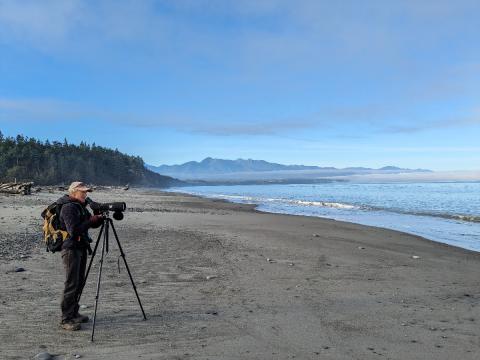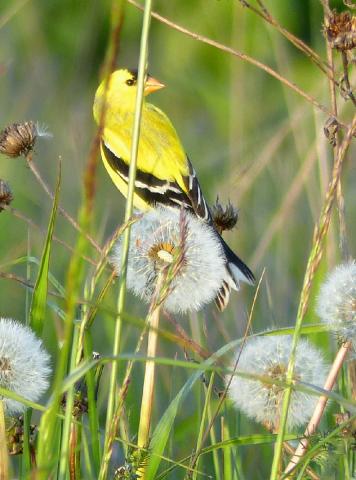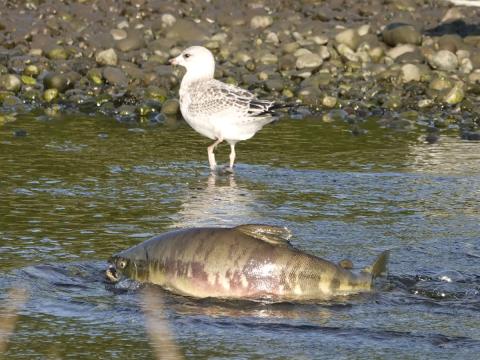
Travel to the Olympic Rainshadow in Dungeness with Experience Olympic
The Dungeness River, sandspit, and estuary are exceptional for birding year-round, with hiking as a bonus activity.
We recommend starting your Olympic National Park birding trip by staying in Sequim/Dungeness and then we can arrange to meet you in Sequim to save an hour of extra driving (30 minutes between Port Angeles and Sequim).
Enjoy Dungeness sites with a birding guide in order to find a diversity of birds with the help of a spotting scope in the Salish Sea and on expansive mudflats, which are best viewed at certain tidal heights.
Dungeness River Estuary
Our Dungeness Birding tours concentrate on the Dungeness River Estuary and Bay from multiple small public access locations. These sites straddle the Dungeness River Mouth and look out onto Dungeness Bay that is formed from the five mile long sandspit.
The protected bay and the sediment flow down the Dungeness River creates an important mudflat for shellfish and birds. There are also nearby wetland areas that host different birds at different times of year that we will visit. Hiring a birding guide helps to concentrate your energy in this important birding area.
Dungeness River Ponds and Agricultural Fields
The flat Dungeness Prairie around the City of Sequim used to be dominated by Oregon White Oak Grassland Savannah.
The flat landscape is dotted with drainage and natural ponds of various depths in low lying areas or where the groundwater table is high which is attractive to dabbling and diving ducks and geese.
Shorebirds, swans, geese, and gulls often use various agricultural fields and the few remaining dairy farm operations.
Dungeness Salmon and the Dungeness Fish Hatchery
In September, it is time to start looking for Pink Salmon in the lower Dungeness River. The larger fish runs are in odd years. Pink Salmon are also called "Humpies" due to large mounded form of the back of the spawning male Pink salmon. These fish are the least common in Olympic National Park rivers and their numbers have been declining.
The Dungeness Fish Hatchery is a place we sometimes visit on birding tours for breeding birds and resident birds like American Dipper. There is also an exceptional artificial frog pond on the property.
Roosevelt Elk Herd in Sequim
Although they might seem domesticated when they are in yards, the Sequim Elk herd is wild. The Sequim elk inhabit a small home range, and do not stay in the mountains during the summer. Pictured here are two smaller Black-tailed Deer in front of the larger Roosevelt Elk.
Wolves are starting to populate the North Cascades and they will presumably then make their way to the Olympics. The Olympic forests will be healthier as wolves will cause more elk herd migration leading to less severe browsing on vegetation, especially near rivers.
Dungeness River Nature Center & Railroad Bridge Park
We recommend planning a visit to Sequim/Dungeness at the start or end of your trip to Olympic National Park since this area is east of Hurricane Ridge, Lake Crescent, Sol Duc, Neah Bay, the Pacific Coast, and the Hoh Rainforest
The Dungeness River Nature Center adjacent to Railroad Bridge Park in Sequim is a great facility to start your Olympic Peninsula exploration. The center includes a fantastic Dungeness River Watershed exhibit. There are also bird feeders behind the center and you will want to walk over Railroad Bridge and walk on some of the Discovery trail.

Dungeness National Wildlife Refuge
This is a great location to visit on your own, because we might not have time to access the 5 mile spit. The wildlife refuge is adjacent to the Dungeness Recreation Area which includes trails along a bluff, through woodlands, and wetlands.
You drive through the Dungeness Recreation Area and continue through the campground to the end of the road where you park and then walk down to and on the sandspit (at low tide, otherwise you have to navigate beach logs). You will need to consult a tide table if you plan to walk the entire distance (5 miles one-way) to the Dungeness Lighthouse.


